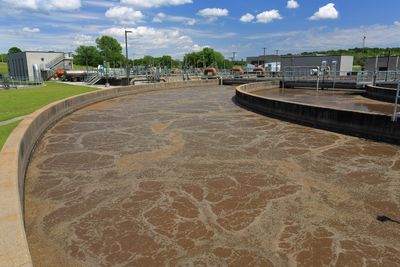Industries & Applications

Wastewater Treatment
Nanobubbles are increasingly being adopted in the wastewater treatment industry due to their unique physical and chemical properties that enhance the efficiency, effectiveness, and sustainability of various treatment processes. Defined as gas-filled cavities smaller than 200 nanometers in diameter, nanobubbles differ significantly from conventional bubbles in that they remain suspended in liquid for extended periods, exhibit near-neutral buoyancy, and collapse in ways that generate beneficial chemical reactions. These attributes make them particularly valuable in municipal and industrial wastewater treatment systems.
One of the most significant advantages of nanobubbles is their ability to improve oxygen transfer efficiency (OTE). In conventional aeration systems, large bubbles rise rapidly to the surface and release oxygen into the atmosphere before it can be fully absorbed into the liquid. In contrast, nanobubbles remain dispersed within the water column for hours or even days, allowing for continuous and efficient diffusion of oxygen. This enhanced gas transfer supports aerobic microbial activity in biological treatment processes, such as activated sludge systems, sequencing batch reactors (SBRs), and membrane bioreactors (MBRs), where oxygen is essential for breaking down organic contaminants.
Another critical function of nanobubbles in wastewater treatment is their ability to generate reactive oxygen species (ROS) upon collapse. When nanobubbles are destabilized—whether through changes in pressure, temperature, or chemical conditions—they implode, releasing a burst of energy that forms hydroxyl radicals and other ROS. These species are powerful oxidizers capable of degrading complex organic pollutants, inactivating bacteria and viruses, and assisting in advanced oxidation processes (AOPs). This makes nanobubbles highly effective in tertiary treatment stages where further purification and disinfection are required.
In addition to enhancing biological and chemical treatment, nanobubbles also play a role in physical treatment processes. They improve flotation efficiency by increasing the surface area available for particle attachment. In systems such as dissolved air flotation (DAF), the presence of nanobubbles facilitates the agglomeration and removal of suspended solids, oils, and grease. Moreover, nanobubbles can penetrate and disrupt biofilms and sludge flocs, leading to improved sludge digestion and reduced sludge volume. This contributes to more effective dewatering and lower sludge handling costs.
From an operational perspective, nanobubble technology is relatively easy to integrate into existing treatment infrastructure. Nanobubble generators can be installed inline or as side-stream units and typically require minimal modifications to existing piping and tanks. They can be configured to use various gases, such as air, oxygen, or ozone, depending on the treatment objective. Their high efficiency also results in energy savings by reducing the demand on blowers and mixers, which are traditionally among the most energy-intensive components of a treatment plant.
In summary, nanobubbles offer a multifaceted and energy-efficient solution for wastewater treatment. They improve oxygen transfer and microbial activity in biological systems, enhance oxidation and disinfection processes, support the removal of suspended solids, and reduce sludge volume. As water treatment facilities face growing challenges related to energy use, contaminant complexity, and environmental regulations, nanobubble technology represents a promising and adaptable advancement in the field.
Copyright © 2025 TMC Nanobubbles - All Rights Reserved.
This website uses cookies.
We use cookies to analyze website traffic and optimize your website experience. By accepting our use of cookies, your data will be aggregated with all other user data.